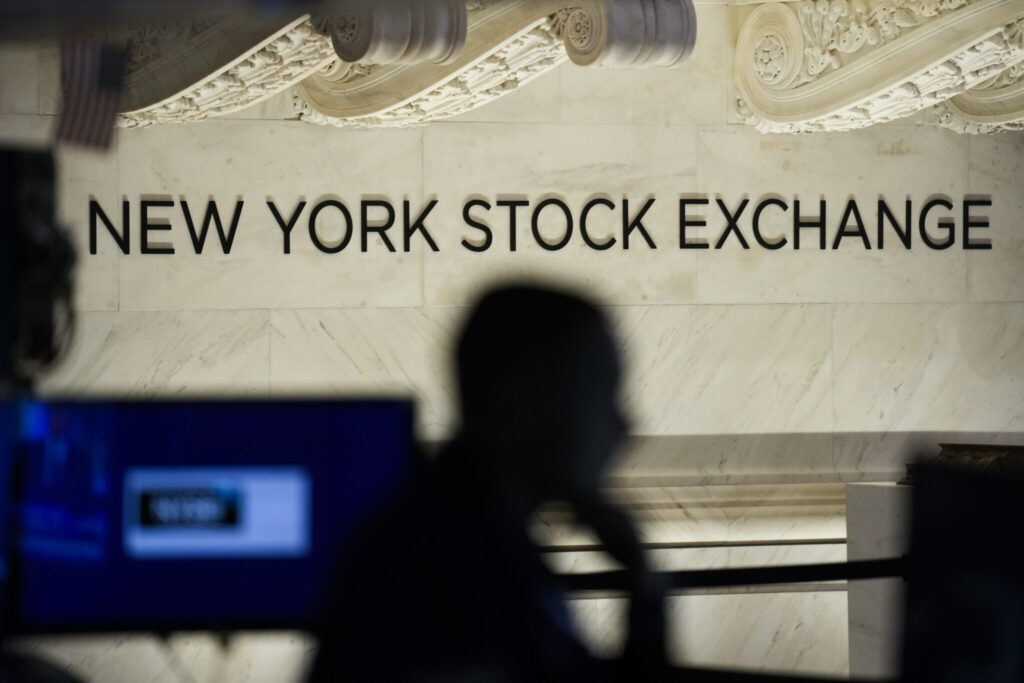The Wall Street benchmark indexes tumbled on Tuesday, weighed by mega cap names, after data showing a rebound in business activity in February stoked fears that the U.S. Federal Reserve might need to hike interest rates by more than expected to control inflation. The Associated Press has the story:
Stocks tumble, Dow down 635, high rates effect
Newslooks- NEW YORK (AP)
Wall Street is tumbling Tuesday, and stocks are heading for their worst day in two months amid worries about the tightening squeeze of higher interest rates and about upcoming profits for companies.
The S&P 500 was 1.9% lower in afternoon trading, which would mark its sharpest drop since a sell-off for the market in December. The Dow Jones Industrial Average was down 650 points, or 1.9%, at 33,190 as of 3:00 p.m. Eastern time, while the Nasdaq composite was 2.2% lower.
Home Depot fell to one of the market’s larger losses after giving financial forecasts that fell short of Wall Street’s expectations. It dropped 6.3% despite reporting stronger profit for the last three months of 2022 than expected.
The retailer said it would spend $1 billion to increase wages for hourly U.S. and Canadian workers. That fed into broader worries for markets that rising costs for companies have been eating into profits, which are one of the main levers that set stock prices.
The other main lever is also looking precarious as interest rates continue to rise. When safe bonds are paying higher amounts of interest, they make stocks and other investments look less attractive. Why take a lot of risk on stocks if safer things are paying out more? Higher rates also raise the risk of a recession because they slow the economy in hopes of snuffing out inflation.
Rates and stock prices are high enough that strategists at Morgan Stanley say U.S. stocks look to be more expensive than at any time since 2007.
The yield on the 10-year Treasury, which helps set rates for mortgages and other important loans, leaped further to 3.94% from 3.82% late Friday. The two-year yield, which moves more on expectations for the Fed, rose to 4.72% from 4.62%. It’s close to its highest level since November. If it pierces that level, it will be at its highest since 2007.
“That is what’s weighing on the market,” said Keith Lerner, chief market strategist at Truist Advisory Services.
Yields have shot higher this month as Wall Street ups its forecasts for how high the Federal Reserve will take short-term interest rates in its efforts to stamp out inflation. The Fed has already pulled its key overnight rate up to a range of 4.50% to 4.75%, up from basically zero at the start of last year.
Several reports have recently come in on the economy that were stronger than expected. Those allay fears that the economy may soon fall into a recession, which is a positive for the market. But on the negative side, they could also fuel upward pressure on inflation and give the Fed more reason to stick to the “higher for longer” campaign it’s been espousing for rates.
The latest evidence came from a preliminary report Tuesday that suggested business activity is gaining momentum. The services industry likely returned to growth last month and was at an eight-month high, according to S&P Global. Manufacturing, meanwhile, may still be contracting, but the reading hit a four-month high.
Such strength has caused the more pessimistic investors on Wall Street to keep their forecasts for a recession but move its timing later into the year.
The Fed said in December that its typical policy maker sees short-term rates rising to 5.1% by the end of this year with the earliest cut to rates happening in 2024. After earlier thinking the Fed would ultimately take it easier on rates than it was talking about, Wall Street has largely come into closer alignment with the Fed’s view.
The worry is that the Fed could ratchet up its forecasts for rates further next month when it releases its latest projections for the economy. Besides showing more strength in the job market and retail sales than expected, recent reports have also suggested inflation is not cooling as quickly and as smoothly as hoped.
Those worries have caused a stall for the strong rally by Wall Street to start the year. After earlier jumping as much as 8.9%, the S&P 500 is now clinging to a gain of 4.3% for the year so far.
Another threat for the market is that the Fed may not be as quick to cut rates in the face of economic weakness as it has in the past, said Truist’s Lerner.
“This is the first time in over a decade the Fed has had to worry about inflation,” he said. “What happened last year has created scar tissue that could keep rates higher for longer.”
“When we do have a downturn, the Fed is not going to be as aggressive as they have in the past. They may still be thinking about inflation.”
While the job market and consumer spending have been resilient in the face of higher interest rates, some pockets of the economy are showing more weakness. A report on Tuesday showed sales of previously occupied homes slowed to their slowest pace in more than a decade.
In stock markets abroad, shares were mostly lower after manufacturing indicators in Europe and Asia painted a mixed picture and Russian President Vladimir Putin accused Western countries of threatening Russia.







